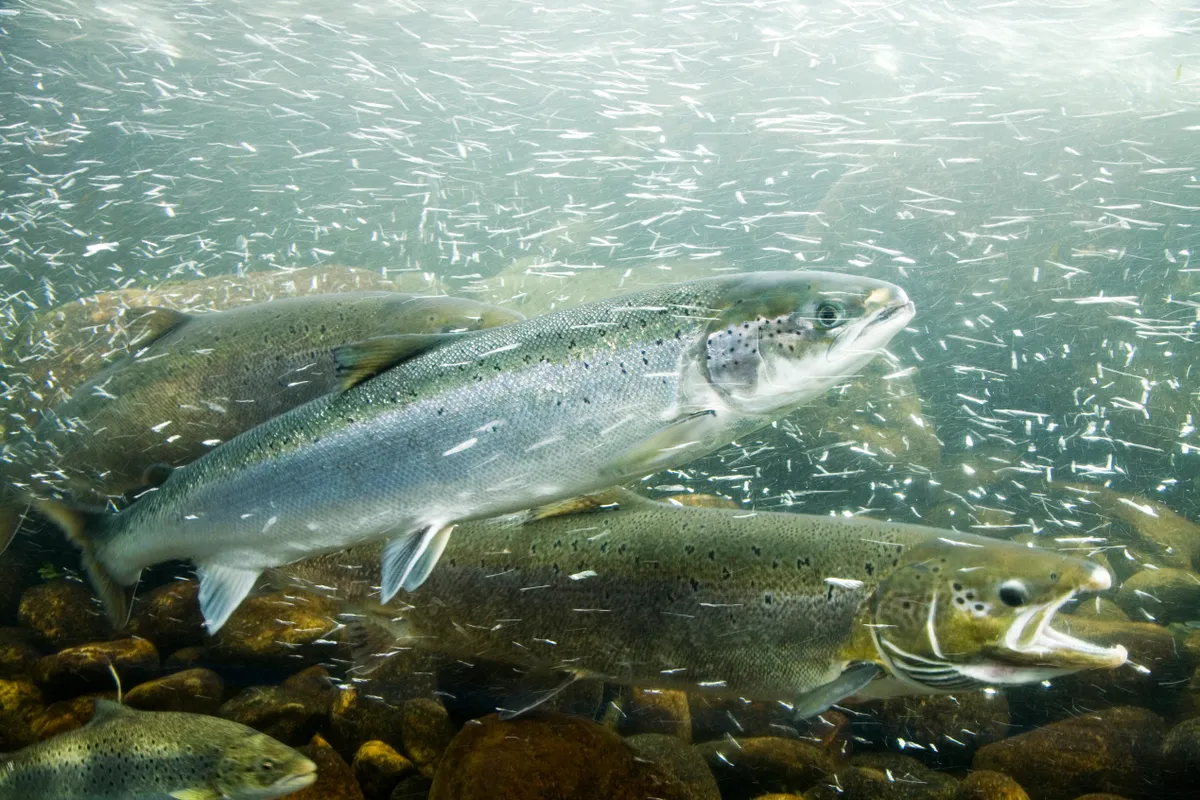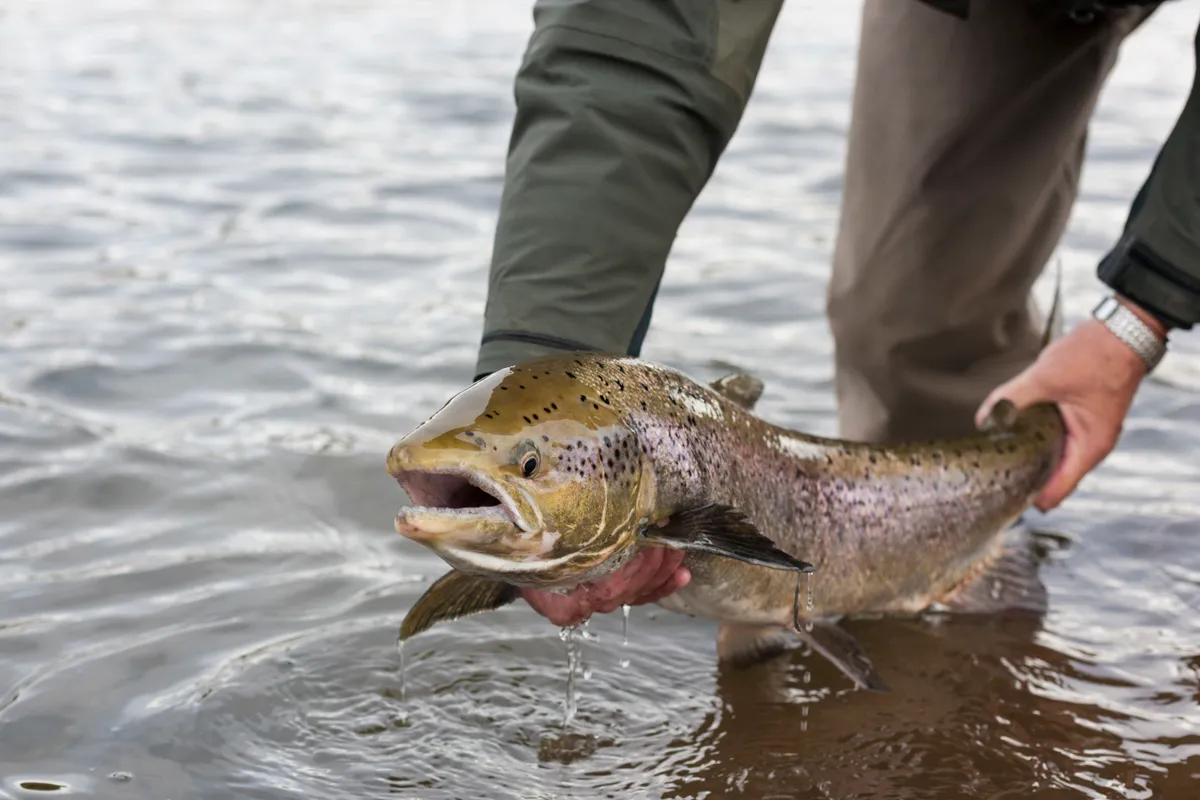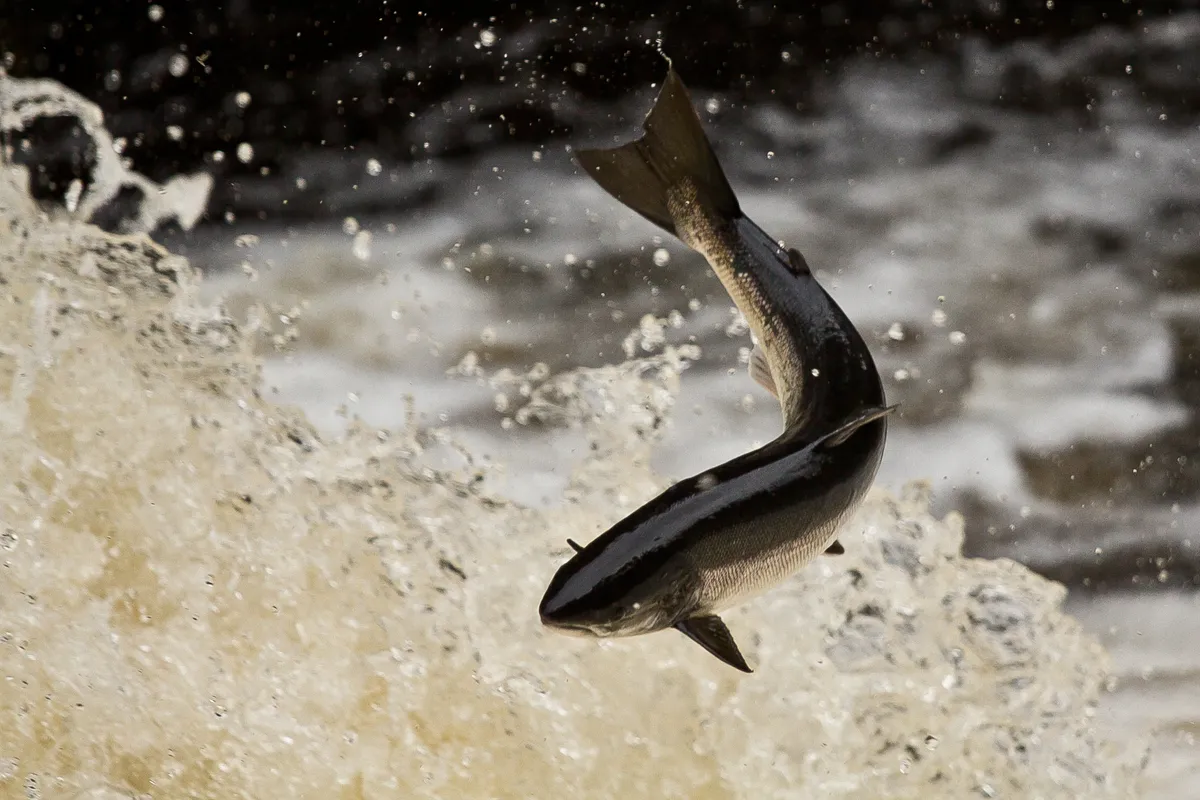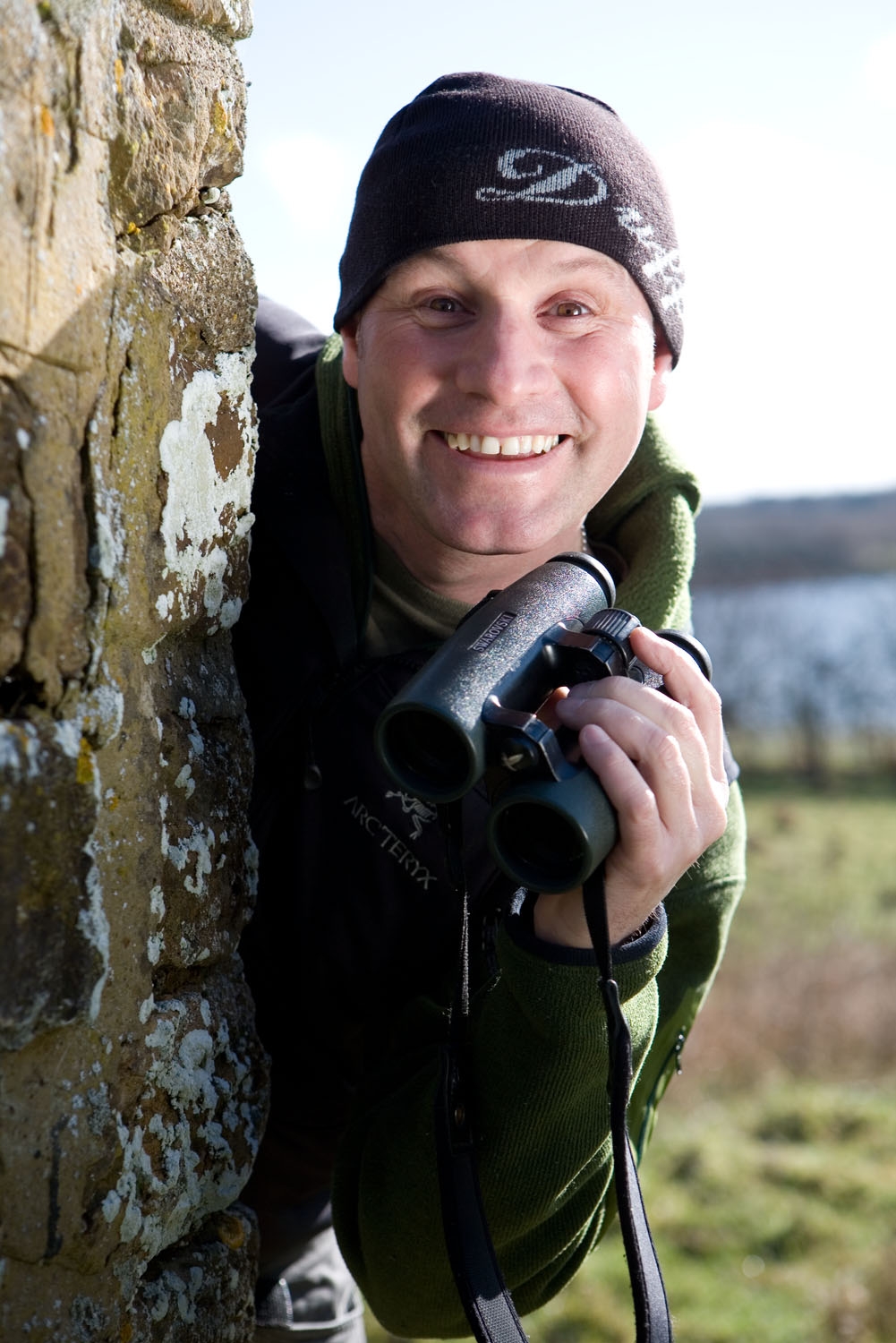With fishing topping the poll of Britain’s most popular outdoor pastime, it is somewhat surprising that the fine art of fish-watching appears so far down the pecking order, when compared to birdwatching. But on a few key days spread across October and November, Atlantic salmon are capable of putting on a display that measures up to any performance our feathered friends are able to muster.
The spectacle of salmon leaping up their natal river can be traced back to a previous autumn when they started their lives as pea-sized eggs laid by their mothers in gravelly riverbeds. In April or May, they hatch as ‘alevins’ before becoming fry and feeding on aquatic invertebrates.
The minority that are not picked off by predators will then steadily develop into larger ‘parr’ with distinctively patterned flanks. Depending on water temperature and food availability, they might spend several years in the river system before a silvery sheen replaces the parr marks and they undergo a physiological change in preparation for saltwater.

Now called smolts, the fish will begin swimming downstream with the current as they head for the sea. Anywhere between 15 and 50 months will be spent feeding in rich deep-sea waters on a diet of crustaceans, post-larval sandeels and small fish. While food is plentiful for the maturing salmon, there are also many predators, such as sharks, seals, dolphins and humans, meaning only about 10 per cent of the smolts that initially leave the rivers will ever be able to return back to freshwater.
Bottlenecks such as rapids and waterfalls are the best places from which to watch salmon leaping
How they pilot back is still unclear, but it’s thought they use a combination of the Earth’s magnetic field and knowledge of ocean currents. Arriving at the coast, they probably locate their natal river by recalling a ‘chemical memory’ imprinted as smolts. Upon entering the estuaries, another transformation occurs when the breeding ‘tartan’ is developed.
The females, called hens, become much darker, with a rainbow colouration along their flanks, while the males, otherwise known as cocks, develop red bellies, streaky flanks and a large hook, called a kype, that protrudes outwards and upwards from their lower jaw.
How do salmon leap upstream?
Relying solely on the reserves put down at sea, the salmon are made up of rippling muscle and use their strength and agility to power up the river. The movement of the fish tends to be dictated by rainfall, with a higher flow rate actually making it easier to work their way past a variety of obstacles en route to their spawning grounds.
Justifiably famed for their leaping abilities, the height they are able to jump depends on the ‘run-up’ the plunge-pool at the base of any waterfall allows for. Driving up from the river bottom into the air, the aim is to jump over any watery obstruction, with a leap of over 3m not uncommon. Dropping back into the water the other side, they propel themselves forward against both the current and gravity with vigorous contractions of their tail. Many leaps seem to end in heroic failure as fish are thrown back into the ‘washing machine’ down below, but the majority usually end up passing the obstacle – particularly when water levels are higher.

Before negotiating waterfalls, salmon will often wait in the relatively calm waters of the plunge pool below. To see the action, why not try using either an aquascope or an underwater camera? However, please do be careful on the wet, slippery banks and rocks at the water’s edge.
What happens during spawning?
In the shallow spawning stretches upriver, you may be able to see the hen salmon digging a series of shallow depressions, called redds, in the gravel. Any eggs subsequently deposited will then be by fertilised by an attendant cock salmon who has successfully fought off the opposition.
The spawning process further upriver can be so exhausting that over 90 per cent frequently die once the eggs have been laid and fertilised. Although a few post-spawning salmon, called kelts, do seem capable of returning to the sea and spawning again in future years.
Discover more about freshwater and marine wildlife
How can I spot leaping salmon?
To see salmon leaping, bottlenecks such as rapids and waterfalls are undoubtedly the best place from which to watch, with early mornings and late afternoons being when the fish are most active, as well as after heavy rainfall. A good vantage point is ideal, and once you’ve identified where salmon are leaping you can then move closer for a better view. So why not swim against the current of popular opinion yourself, by catching what is surely one of our most underrated wildlife spectacles?
Do any animals prey on salmon?
All manner of predators will eat salmon parr in rivers, such as goosander, grey heron, kingfisher and mink, but the only animal capable of taking on a mature salmon swimming upriver to spawn will be an otter. Look out for their distinct spraint piles – smelling of jasmine tea!

Best places to see leaping salmon in the UK
The Falls of Shin, Sutherland
This Highland waterfall on the River Shin in Achany is famed for its leaping salmon, and offers a lookout from which to watch the action, with a visitor centre located close by.
Buchanty Spout, Perth
The narrow waterfall on the River Almond is undoubtedly one of the best places for viewing leaping salmon in all of Scotland and a favourite spot with photographers.
Hexham Weir, Northumberland
Standing on the banks of the River Tyne, salmon can be seen leaping up this weir as they head to spawning grounds further upriver in the Pennines.
Gilfach Nature Reserve, Powys
When the River Marteg is swollen with rain this reserve, managed by Radnorshire Wildlife Trust, is a great place to catch both salmon leaping and otters trying to intercept them.
Philiphaugh Salmon Viewing Centre, Scottish Borders
The Salmon Viewing Centre near Selkirk offers the opportunity to learn all about the salmon’s life-cycle before seeing the fish in action at ‘the cauld’ – a large weir a short walk away.
Main image: An Atlantic salmon attempting to jump up a waterfall in the Scottish Highlands, on a journey to spawning grounds. © georgeclerk/Getty
